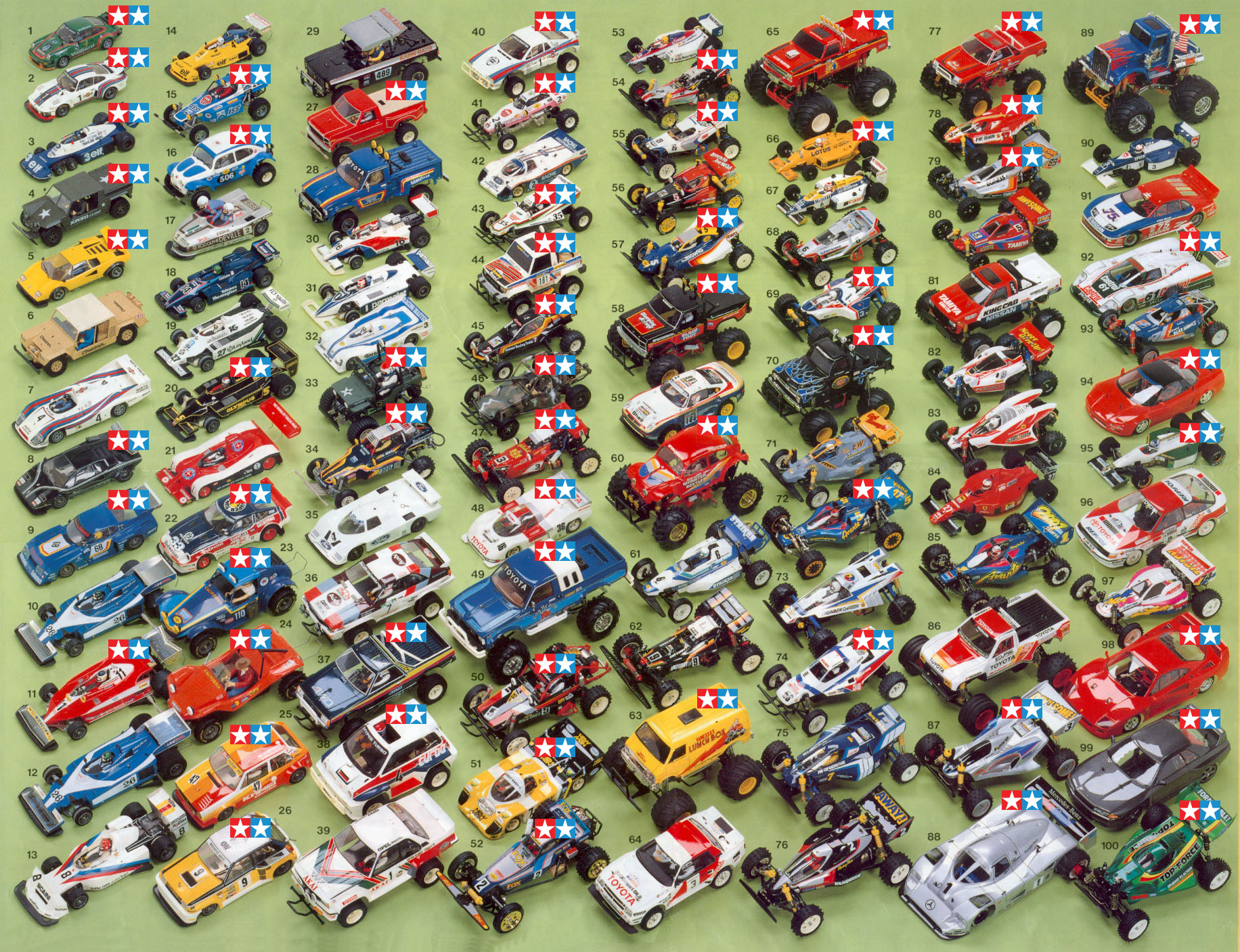Re-releases figures
I wanted to graphically show you how the re-release program spreads into the 100 first models thanks to the famous "Tamiya's Commemorative 100th R/C Car" poster, without considering the re-release form. About this poster, I think it was made by Tamiya, but I couldn't find any confirmation of this.
Here you will only find models that were re-released up to now, either in "original" or modernized form. The bodyshell-alone re-releases are not shown.
Also, in case a model was re-released several times (several colors for example), only one re-release is counted.

Now, a few figures:
- 58xxx series: 56 re-released models (32 original - 24 modernized)
- 581xx series: 26 re-released models (10 original - 16 modernized)
- 582xx series: 5 re-released models (3 original - 2 modernized)
This leads us to the following conclusion: so far, in original or modernized version, Tamiya has re-released 87 models (half of them being in original form) out of over 600 models released over the last 40 years. That is less than 15% of their catalog.
Just to say, to some ever grumbling people complaining about Tamiya only releasing old models from their museum lately...
Conclusion on re-releases
Tamiya proved it: every model can be re-released in a form or another, as complicated or allegedly impossible / unlikely it may seem. The SRBs or the 3Speeds, for example, were allegedly impossible to re-release: too much metal when all Tamiya industrial processes have been focused on plastic for decades. Other models were allegedly not candidates for re-releases due to loss of the original mould or an altered mould to produce another model.
The true fact is that Tamiya doesn't face the difficulties imagined by fans when re-releasing a model. By the way, note that attempts to guess the next re-released model are vain: no one knows which model Tamiya will re-release, or when.
That said, I dare to make one prediction (not guts, no glory ![]() ) :
) :
I think Tamiya will not re-release in original form any of the first 12 on-road models. That is all models from the Porsche 934 RSR up to the Martini Mk.22 Renault, excluding the off-road XR311 (already re-released) and Lamborghini Cheetah. I define in original form as the original bodyshell on the original chassis, which is what is considered as an "original" re-release in this article.
Indeed, I am guessing that Tamiya thinks these chassis are too basic to be re-release candidates nowadays, which would not avoid bodyshell re-releases though (alone or used on modern chassis).
However, my prediction may not resist the Porsche 934 RSR 50th Anniversary in 2016...
Economically speaking, a re-release is probably highly profitable: investissement is close to zero since the production tool already exists (moulds cost a fortune) despite the low cost of potential modifications to modernize the model. In addition, the risk on sales is pretty low: the model was already a success in the past and it is highly doubtful it would not meet its public again.
Last, the big question about re-releases: are they good or bad for the hobby? Opinions diverge: not even considering those who speculate (who do not deserve any consideration in my opinion), the answer differs upon the kind of collection and the collector's liking:
- "purists": a vintage model needs to be vintage form everywhere, a bit like a time capsule. Typically, this is pretty much the definition of a museum-collection (which doesn't mean models are only displayed on shelves). Inevitably, the re-release will be a problem: it is then much more difficult to "true period" restore a model since the difference between period and re-released parts is sometimes impossible. In a way too, the period model is no longer "exclusive" when everyone can buy it new from any store.
- other collectors: the "purity" of the model is less important than having it. Even new and re-released, the model still carries the memories of an era, a look and mechanical aspects long lost and forgotten by modern products. Also, a re-released model is less fragile than an original (because the plastics are not decades-old) and spare parts are available: perfect to run the model and to get RC moments that smell like the 80's...
As for me, I'm obviously in the second group, even if I admire "purists" for their patience and authenticity efforts. Nonetheless, I do like when the model remains "true to original", that is when it keeps (in my opinion) its soul, its sometimes outdated mechanics and its 80's look.
Related Articles




